Monday 18 January 2010
Ingoldmells
Ingoldmells, High Street c1965
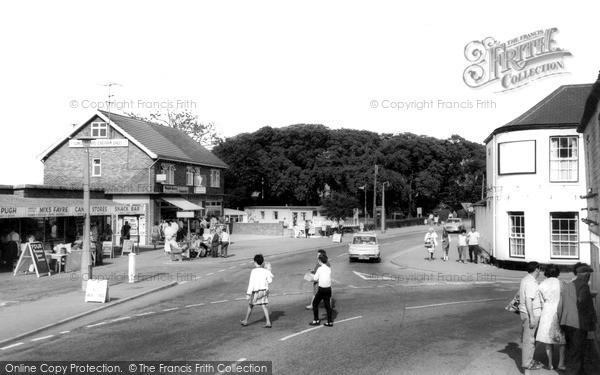
Reproduced courtesy of Francis Frith.
Ingoldmells, Post Office Stores c1955
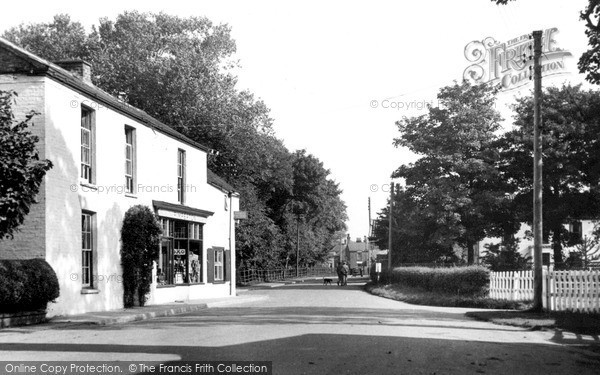
Reproduced courtesy of Francis Frith.
Ingoldmells, Butlin's Holiday Camp c1955
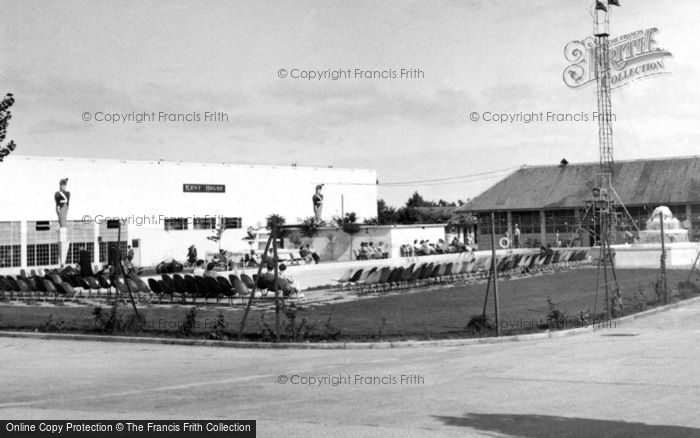
Reproduced courtesy of Francis Frith.
In terms of villages it is relatively large and it has a population of 3888. The village receives a lot of tourism yearly due its close position to Skegness. Most housing is found in the west of the village in large council complexes near the beautiful ancient church of St Peter and Paul. The primary school is on Simpson Court.
Close by to the west is Addlethorpe. There are fish and chip shops near the beach.
History
During World War II, RAF Ingoldmells was a Chain Home Low radar station, providing low-altitude short-range warning, with a rotating antenna. RAF Stenigot on the Lincolnshire Wolds provided longer-range warning for the area. RAF Skendleby was the other Chain Home Low station in Lincolnshire near Skendleby, Spilsby.
Holiday parks
Billy Butlin opened the UK's first holiday camp there in 1936, which is a large employer in the area, and attracts many tourists. During World War II the Butlin's camp was used as the site of HMS Royal Arthur, a Royal Navy shore establishment.
Fantasy Island
Fantasy Island is a family Amusement Park in Ingoldmells. The park opened in 1995 and has since built up a wide variety of rides, attractions and entertainment. Whilst entry to the park is free, guests either pay per ride or purchase an unlimited ride wristband. There is a large open air market situated within the park, as well as an indoor market.
Many facilities have become available to accommodate the tourists including some shops and caravan parks.
http://en.wikipedia.org/wiki/Ingoldmells

Reproduced courtesy of Francis Frith.
Ingoldmells, Post Office Stores c1955

Reproduced courtesy of Francis Frith.
Ingoldmells, Butlin's Holiday Camp c1955

Reproduced courtesy of Francis Frith.
In terms of villages it is relatively large and it has a population of 3888. The village receives a lot of tourism yearly due its close position to Skegness. Most housing is found in the west of the village in large council complexes near the beautiful ancient church of St Peter and Paul. The primary school is on Simpson Court.
Close by to the west is Addlethorpe. There are fish and chip shops near the beach.
History
During World War II, RAF Ingoldmells was a Chain Home Low radar station, providing low-altitude short-range warning, with a rotating antenna. RAF Stenigot on the Lincolnshire Wolds provided longer-range warning for the area. RAF Skendleby was the other Chain Home Low station in Lincolnshire near Skendleby, Spilsby.
Holiday parks
Billy Butlin opened the UK's first holiday camp there in 1936, which is a large employer in the area, and attracts many tourists. During World War II the Butlin's camp was used as the site of HMS Royal Arthur, a Royal Navy shore establishment.
Fantasy Island
Fantasy Island is a family Amusement Park in Ingoldmells. The park opened in 1995 and has since built up a wide variety of rides, attractions and entertainment. Whilst entry to the park is free, guests either pay per ride or purchase an unlimited ride wristband. There is a large open air market situated within the park, as well as an indoor market.
Many facilities have become available to accommodate the tourists including some shops and caravan parks.
http://en.wikipedia.org/wiki/Ingoldmells
Thursday 14 January 2010
Chapel St Leonards
Chapel St Leonards, the Vine Hotel 1959

Reproduced courtesy of Francis Frith.
Chapel St Leonards, the Village c1959
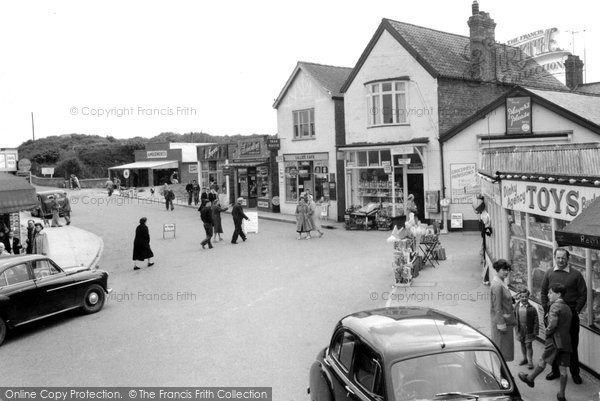
Reproduced courtesy of Francis Frith.
Chapel St Leonards
Chapel St. Leonards is a village in Lincolnshire on the east coast of England and is situated just 5 miles to the north of the resort of Skegness. It is administered by East Lindsey District Council.
The village is primary a location for caravan park holidays, with its main attraction being several miles of beaches.
The village is close to the many attractions this region has to offer, including Fantasy Island, market towns, and the Lincolnshire Wolds.
Another feature of the village is Chapel Point, which is a mile north of the centre of the village. Chapel Point was once part of a major coastal defence line during World War II and has now been restored. The restoration has included the Gun Structure and the Viewing Platform. In recent years, it has become a favourite location for birdwatchers, as it is frequently visited by a number of overseas birds such as the Mediterranean Gull.
History
The name of the village derives from the fact that there was originally a chapel of Mumby dedicated to St Leonard here, the parish history being tied very closely to Mumby parish and Mumby Chapel as, at one time, they were all part of one large ecclesiastical entity.
The chapel was rebuilt in 1572 after a flood and it was again rebuilt in 1794 on a much smaller scale. There was further rebuilding in 1866 and in 1901 the church was lengthened and the tower built. The red tiled tower is unique in Lincolnshire.
In 1924, the chapel was enlarged and lengthened with a new east window and reredos. As it stands, the present Anglican parish church only has registers that date from 1665, although Bishop's transcripts go back as far as 1568.
http://en.wikipedia.org/wiki/Chapel_St_Leonards

Reproduced courtesy of Francis Frith.
Chapel St Leonards, the Village c1959

Reproduced courtesy of Francis Frith.
Chapel St Leonards
Chapel St. Leonards is a village in Lincolnshire on the east coast of England and is situated just 5 miles to the north of the resort of Skegness. It is administered by East Lindsey District Council.
The village is primary a location for caravan park holidays, with its main attraction being several miles of beaches.
The village is close to the many attractions this region has to offer, including Fantasy Island, market towns, and the Lincolnshire Wolds.
Another feature of the village is Chapel Point, which is a mile north of the centre of the village. Chapel Point was once part of a major coastal defence line during World War II and has now been restored. The restoration has included the Gun Structure and the Viewing Platform. In recent years, it has become a favourite location for birdwatchers, as it is frequently visited by a number of overseas birds such as the Mediterranean Gull.
History
The name of the village derives from the fact that there was originally a chapel of Mumby dedicated to St Leonard here, the parish history being tied very closely to Mumby parish and Mumby Chapel as, at one time, they were all part of one large ecclesiastical entity.
The chapel was rebuilt in 1572 after a flood and it was again rebuilt in 1794 on a much smaller scale. There was further rebuilding in 1866 and in 1901 the church was lengthened and the tower built. The red tiled tower is unique in Lincolnshire.
In 1924, the chapel was enlarged and lengthened with a new east window and reredos. As it stands, the present Anglican parish church only has registers that date from 1665, although Bishop's transcripts go back as far as 1568.
http://en.wikipedia.org/wiki/Chapel_St_Leonards
Wednesday 13 January 2010
skegness
Skegness, Official Opening of the Clock Tower 1899
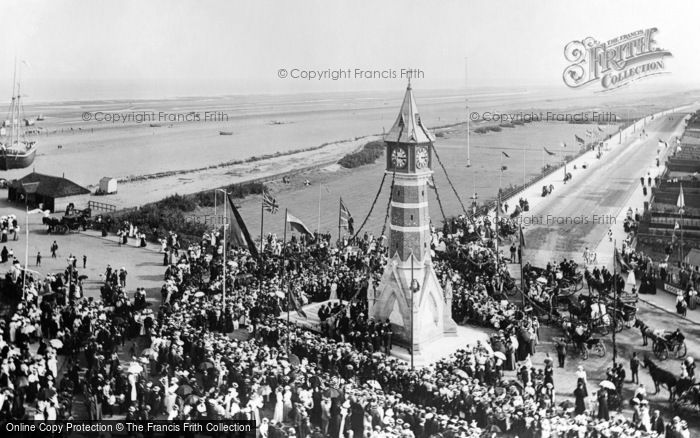
Reproduced courtesy of Francis Frith.
Skegness, the Clock Tower c1955
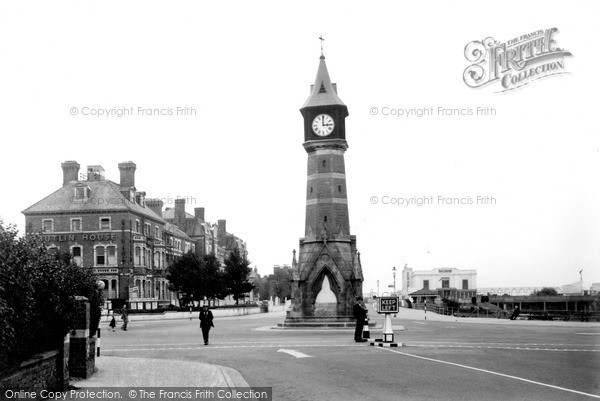
Reproduced courtesy of Francis Frith.
Early history
The name indicates that Skegness has its origin in the Danish period of settlement in England. Local historians say that the town took its name from Skeggi (meaning 'bearded one'), one of the Vikings who established the original settlement which has since been washed away by the sea. However, it is much more likely to have derived from words which appear in modern Danish as skæg, beard and næs, nose or in geographical terms, headland.
Lying within the historic county boundaries of Lincolnshire from a very early time, for governance, the parish of Skegness was in the Marsh division of the ancient Candleshoe Wapentake in the Parts of Lindsey.
Longshore drift carries particles of sediment southwards along the Lincolnshire coast but at Skegness, the sand settles out in banks (tombolos) which run at a slight angle to the coast forming the beard. The slightly elevated dune land sheltered the small natural harbour which the Danes found behind the banks. The finer sediment drifts on to find a home in the mud of The Wash, beyond Gibraltar Point.
In August 1642, a consignment of arms and money, probably raised by Queen Henrietta Maria, in the Netherlands for the support of King Charles I's campaign in the Civil War, was forced into Skegness by the ships of the Parliamentarian Earl of Warwick.
Skegness was primarily a fishing village and small port until the arrival of the railway in 1875. In 1908, Great Northern Railways commissioned a poster to advertise excursions to the resort, the first being from King's Cross, London on Good Friday 1908, leaving London at 11.30 am. The 'Skegness is so Bracing' poster featuring The Jolly Fisherman helped to put Skegness on the map and is now world famous. The poster, derived from an oil painting by John Hassall (illustrator), was purchased by the railway company for the 12 guineas. Paradoxically, Mr Hassall did not visit the resort until 1936. He is said to have died penniless.
Resort town and Butlins
Most of the land in what is now the downtown core formed part of the estate of the Earl of Scarbrough and he, together with his agent H.V.Tippet, realised that the extensive sandy beach could be made attractive to holidaymakers from the industrial towns of the English Midlands, a clientele already developed by Thomas Cook. He planned the town as a resort from 1877 and it expanded rapidly, but along with many other UK resorts, especially those on the cold North Sea, it lost out to the cheap package holiday boom which opened up Spain (in particular) to the average holidaymaker after World War II currency restrictions were lifted and travellers could leave the UK with more than 50 pounds.
Ingoldmells, the parish to the north of Skegness, was the site of the UK's first Holiday Camp, started by Billy Butlin in 1936. Butlins is still there today, in modern dress, at the north end of the town, on the road to Ingoldmells. It maintains its appeal as a popular destination for family holidays, and attracts thousands to the resort in the low season with music weekends encompassing 60s, 80s, soul and other genres.
The Wash Incident
The Wash Incident took place in the early hours of 5 October 1996 when a strange red and green rotating light was seen by many Skegness residents and police officers to the southeast of Skegness, who then contacted the Coastguard at Great Yarmouth. It later involved many RAF stations, including RAF Neatishead, and GCHQ. The object was not an aircraft because although it could be seen on radar, it had no transponder. The Skegness News, a local newspaper which no longer exists, investigated the incident and sought confirmation of the object from the Jodrell Bank Observatory. In their report to the RAF, the observatory said that Venus, ‘the queen of UFOs’, which had been shining with exceptional brilliance in the early morning sky to the east, probably explained the light shown on the video.
Present day
In March 2005, Skegness took the top spot in a survey by "Yours magazine", looking at the best retirement places in the UK. Yours researchers visited sixty likely towns, and factors involved in judging included house prices, hospital waiting lists, the crime rate, council tax rates, activities and attractions, weather patterns and ease of transport. It has also been described by Lonely Planet's Great Britain guide as "everything you could want" in a seaside resort. On 22 July 2008 the newly elected Mayor of London, Boris Johnson, caused controversy in an article in the Daily Telegraph where he declared "Stuff Skegness, my trunks and I are off to the sun" in his desire to have a foreign holiday this year.
http://en.wikipedia.org/wiki/Skegness

Reproduced courtesy of Francis Frith.
Skegness, the Clock Tower c1955

Reproduced courtesy of Francis Frith.
Early history
The name indicates that Skegness has its origin in the Danish period of settlement in England. Local historians say that the town took its name from Skeggi (meaning 'bearded one'), one of the Vikings who established the original settlement which has since been washed away by the sea. However, it is much more likely to have derived from words which appear in modern Danish as skæg, beard and næs, nose or in geographical terms, headland.
Lying within the historic county boundaries of Lincolnshire from a very early time, for governance, the parish of Skegness was in the Marsh division of the ancient Candleshoe Wapentake in the Parts of Lindsey.
Longshore drift carries particles of sediment southwards along the Lincolnshire coast but at Skegness, the sand settles out in banks (tombolos) which run at a slight angle to the coast forming the beard. The slightly elevated dune land sheltered the small natural harbour which the Danes found behind the banks. The finer sediment drifts on to find a home in the mud of The Wash, beyond Gibraltar Point.
In August 1642, a consignment of arms and money, probably raised by Queen Henrietta Maria, in the Netherlands for the support of King Charles I's campaign in the Civil War, was forced into Skegness by the ships of the Parliamentarian Earl of Warwick.
Skegness was primarily a fishing village and small port until the arrival of the railway in 1875. In 1908, Great Northern Railways commissioned a poster to advertise excursions to the resort, the first being from King's Cross, London on Good Friday 1908, leaving London at 11.30 am. The 'Skegness is so Bracing' poster featuring The Jolly Fisherman helped to put Skegness on the map and is now world famous. The poster, derived from an oil painting by John Hassall (illustrator), was purchased by the railway company for the 12 guineas. Paradoxically, Mr Hassall did not visit the resort until 1936. He is said to have died penniless.
Resort town and Butlins
Most of the land in what is now the downtown core formed part of the estate of the Earl of Scarbrough and he, together with his agent H.V.Tippet, realised that the extensive sandy beach could be made attractive to holidaymakers from the industrial towns of the English Midlands, a clientele already developed by Thomas Cook. He planned the town as a resort from 1877 and it expanded rapidly, but along with many other UK resorts, especially those on the cold North Sea, it lost out to the cheap package holiday boom which opened up Spain (in particular) to the average holidaymaker after World War II currency restrictions were lifted and travellers could leave the UK with more than 50 pounds.
Ingoldmells, the parish to the north of Skegness, was the site of the UK's first Holiday Camp, started by Billy Butlin in 1936. Butlins is still there today, in modern dress, at the north end of the town, on the road to Ingoldmells. It maintains its appeal as a popular destination for family holidays, and attracts thousands to the resort in the low season with music weekends encompassing 60s, 80s, soul and other genres.
The Wash Incident
The Wash Incident took place in the early hours of 5 October 1996 when a strange red and green rotating light was seen by many Skegness residents and police officers to the southeast of Skegness, who then contacted the Coastguard at Great Yarmouth. It later involved many RAF stations, including RAF Neatishead, and GCHQ. The object was not an aircraft because although it could be seen on radar, it had no transponder. The Skegness News, a local newspaper which no longer exists, investigated the incident and sought confirmation of the object from the Jodrell Bank Observatory. In their report to the RAF, the observatory said that Venus, ‘the queen of UFOs’, which had been shining with exceptional brilliance in the early morning sky to the east, probably explained the light shown on the video.
Present day
In March 2005, Skegness took the top spot in a survey by "Yours magazine", looking at the best retirement places in the UK. Yours researchers visited sixty likely towns, and factors involved in judging included house prices, hospital waiting lists, the crime rate, council tax rates, activities and attractions, weather patterns and ease of transport. It has also been described by Lonely Planet's Great Britain guide as "everything you could want" in a seaside resort. On 22 July 2008 the newly elected Mayor of London, Boris Johnson, caused controversy in an article in the Daily Telegraph where he declared "Stuff Skegness, my trunks and I are off to the sun" in his desire to have a foreign holiday this year.
http://en.wikipedia.org/wiki/Skegness
Subscribe to Posts [Atom]